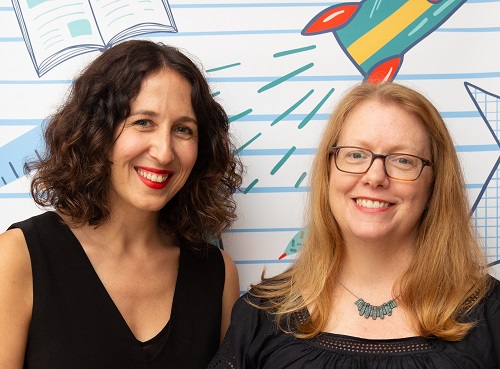Mindful Storytimes: Fostering Calm and Focus
How to extend toddlers' attention spans and model mindful practices.
At a Crown Heights Library storytime in Brooklyn. NY, children’s librarian Stefanie Sinn pulls out a Hoberman Sphere, a plastic structure that can expand and contract. After a demonstration, she instructs the group to take three deep breaths. “As the sphere gets bigger, we’ll inhale, feeling our lungs fill up and our bellies blow up like balloons,” she says. “As it gets smaller, we’ll exhale, push your belly button to your spine, deflate your balloon.”
Some children join in, but many are mesmerized and still, mouths agape. There’s a noticeable change in energy. After, Sinn asks them to sit quietly and close their eyes if they want. This is just one of the mindful moments Sinn incorporates into weekly storytime.
Mindfulness, a mental state achieved by focusing on the present and accepting one’s feelings and bodily sensations, has positive benefits for young children and grown-ups alike. “Practicing mindfulness can help our brains operate less from our limbic systems—responsible for survival—and more from our prefrontal cortex—our ‘thinking center,’ ” says author and consultant Katie Scherrer, founder of the early learning mindfulness program Stories, Songs, and Stretches! “It has been shown to enhance children’s learning by moving out of a state of stress…and into a state of calm, focus, and memory.”
Researchers agree. Preschool children showed higher gains in learning, health, and social-emotional development after a 12-week mindfulness-based kindness curriculum, as psychologist Lisa Flook and cowriters describe in a Developmental Psychology article. Mindfulness in parents of preschoolers can alleviate some of the challenges of raising young children. Mindfulness-based interventions have been shown to mitigate the impact of toxic stress, which can interfere with early brain development, by strengthening self-regulation and resilience.
During storytime, it can be a challenge to regain little ones’ attention. Mindful breathing can be “a signal to come back and reset,” Sinn says. Rachel Lipkin, children’s librarian at Brooklyn’s Brighton Beach Library, has noticed that she can extend toddlers’ attention spans and read one more book after mindful breathing.
To get started, develop your own mindful practice, such as deep breathing or daily gratitude. “The most powerful way to teach mindfulness to children is to live mindfully,” says Scherrer. “Then the benefits show up in all of our interactions with children and families, rather than being something we are telling them to do and then discarding.”
Start small and be consistent, Sinn advises. “Sneak in one little thing here or there and keep it going.” She uses a singing bowl at the beginning of storytime. “I strike it three times and sweep the wooden mallet around the rim, whispering shhhh until everyone is looking at me. Then I greet them warmly and praise them for focusing and paying attention.”
While any book can be read mindfully, many recent titles center on mindfulness. Scherrer recommends Breathe and Be by Kate Coombs, a collection of short verse with gentle illustrations by Anna Emilia Laitinen; Call Me Tree/Llámame árbol by Maya Christina Gonzalez, a bilingual celebration of the growth of a tree that children can embody through movement; and Baby Present by Rachel Neumann with photos by Ericka McConnell, a board book inspired by Zen teachings.
Some young children might find sitting still and being quiet challenging for reasons that may not be apparent, such as having a disability or previous trauma. Preface these activities by making sure children know they have a choice, and move on if something isn’t working. Families may object to mindfulness practices due to their religious beliefs. As with any new activity, be mindful (pun intended) of your community’s needs and adjust your approach accordingly.
Sinn notes that storytime is inherently mindful, as are activities you already do in storytime, particularly when you’re present and centered. Slowing down and letting children look at the pictures, stating how you feel after reading a story, and encouraging children to do the same are mindful practices. And there is no one more in the moment than a young child enthralled by a favorite book.
Rachel G. Payne is coordinator of early childhood services at Brooklyn Public Library. Jessica Ralli is BPL’s coordinator of early literacy programs.

RELATED
The job outlook in 2030: Librarians will be in demand
The job outlook in 2030: Librarians will be in demand
ALREADY A SUBSCRIBER? LOG IN
We are currently offering this content for free. Sign up now to activate your personal profile, where you can save articles for future viewing






Add Comment :-
Be the first reader to comment.
Comment Policy:
Comment should not be empty !!!